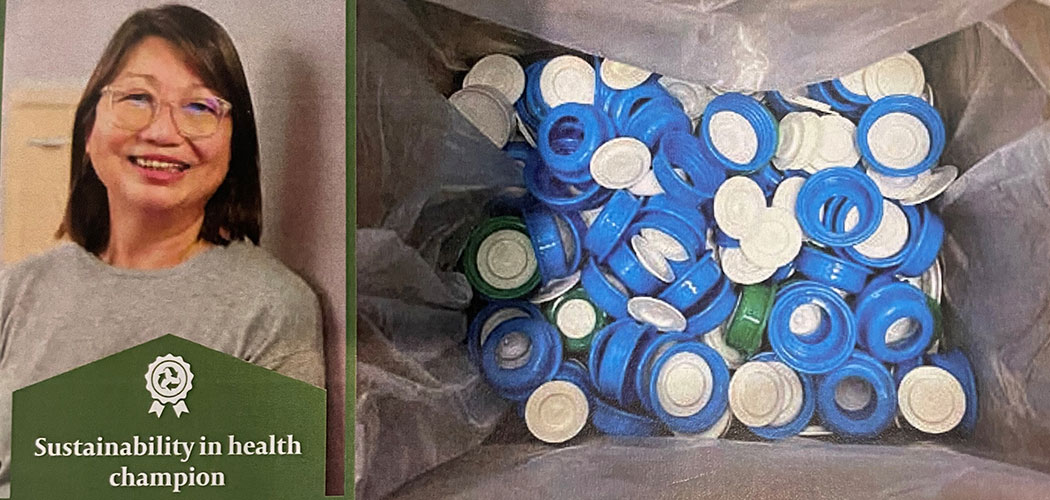Designing material waste out of our clinical workflow improves efficiency while reducing the environmental and financial cost of healthcare without compromising patient outcomes.
This case study demonstrates how our knowledge on the ward can target unnecessary use of medical consumables and advocating how an apparent small change can lead to a big impact.
Working as Nurse Manager on the postnatal ward at the Royal Women’s Hospital, Melbourne, I have noticed with dismay the box that collected unused caps that get discarded every time that a sterile teat is attached to a milk bottle for feeding a newborn baby. The box became full quickly and while these caps are recyclable, the waste hierarchy goal is to avoid waste in the first place.
When our Sustainability group representative, Dr Ying Gu came for a visit, I raised my concern that this cap already came with the feeding bottle but was unnecessarily supplied with the separately packaged sterile teat.
An important aspect of designing waste out of our clinical workflow is to involve all stakeholders in the process. Firstly, we involved our Clinical Midwife Lactation Consultants within the Lactation and Breastfeeding Services to confirm that removing this unnecessary cap did not have any unexpected clinical impact such as the assembly of the feeding bottle. Next, we contacted the supplier and asked if the sterile teat could be supplied without the cap.
This revealed a surprise when we found the teat was available without the cap and could be purchased through Healthshare Victoria, the state’s procurement entity, at a lower cost. We approached our Procurement department with a proposal to change to the teat-only item. With the endorsement from Lactation and Breastfeeding Services, we were able to obtain agreement from each department’s Unit Manager to the change.
Lastly, the Procurement department were able to update the item codes for ordering by removing the ‘teat with cap’ item from the hospital catalogue. By actively involving all members of the healthcare team in the process, organisations can effectively implement change and have the support of the whole team in the long term.
It is truly remarkable to see the power of spreading a simple message and witnessing how impactful it can be. It has been eighteen months since we removed this extra cap from the teats supplied to our postnatal wards. By examining our purchase data, we estimate that 42,625 plastic caps have been diverted from manufacturer and landfill and saved our hospital $5,000.
It is our hope that by sharing information of this initiative, that we can spread the reach of this seemingly simple change to your postnatal unit. By spreading the word about avoiding waste in healthcare, we can create a ripple effect that resonates with others and inspire individual action that collectively can deliver the triple bottom line of financial sustainability while caring for people and planet.
AUTHOR
Nancy Leong is Associate Unit Manager/ Blue Maternity Services, The Royal Women’s Hospital, Victoria








